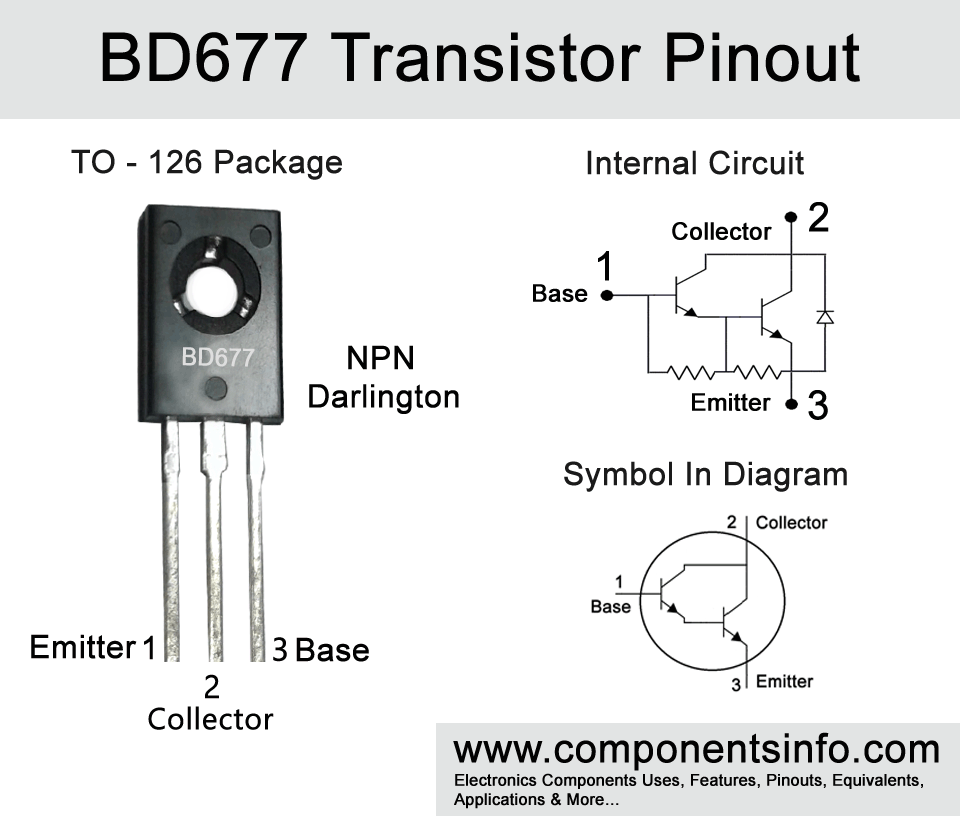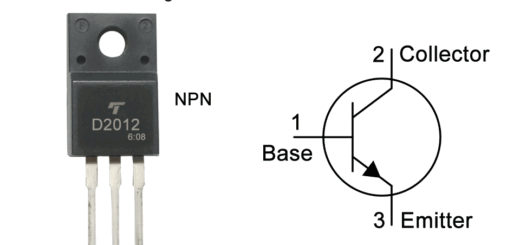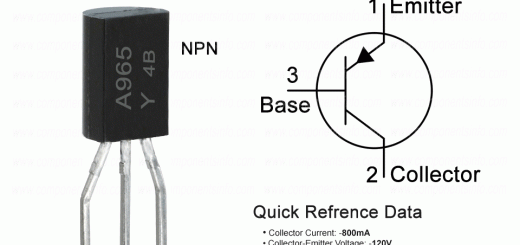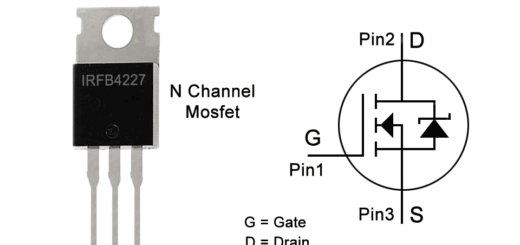BD677 Transistor Pinout, Applications, Equivalent, Features and More
BD677 is another Darlington transistor of BD6XX series avaialbe in TO-126 package. This post contains information about BD677 transistor pinout, applications, equivalent, features, where and how to use and other important info.
Absolute Maximum Ratings:
- Package Type: TO-126
- Transistor Type: NPN Darlington
- Max Collector Current(IC): 4A
- Max Collector-Emitter Voltage (VCEO): 60V
- Max Collector-Base Voltage (VCBO): 60V
- Max Emitter-Base Voltage (VEBO): 5V
- Max Collector Power Dissipation (Pc): 40 Watt
- Minimum DC Current Gain (hFE): 750
- Max Storage & Operating temperature: -55 to +150 Centigrade
PNP Complementary:
PNP Complementary of BD677 is BD678
Replacement and Equivalent:
BD679, BD679A, BD681, MJE801, MJE800, MJE803, MJE802, BD779, BD775, BD679, BD677
BD677 Transistor Explained / Description:
BD677 is another transistor of BD6XX series of Darlington transistors. A Darlington transistor is a transistor that contains two BJT transistors inside which are connected in a special way which is called Darlington. The purpose of connecting two transistor in that ways is to achieve very high current gain and to use it in applications that require that much gain for example amplifiers, driver circuits, switching circuits etc.
Now we understand what it actually does in a circuit. For example in an audio amplifier circuit it amplifies the weak audio signal to higher level or low gain signals to high gain same as in other applications such as in motor driver circuits it amplifies the control signals to a level on which the motor is smoothly controlled and same as in other variety of circuits where the signal amplification is required a Darlington transistor plays a very important role. So the BD677 can be used for same purposes in variety of applications.
Now looking at the absolute maximum ratings of BD677 the collector-emitter voltage of the transistor is 60V, the collector current is 4A, collector-base voltage is also 60V, emitter-base voltage is 5V and collector power dissipation is 40W.
Where We Can Use it & How to Use:
This transistor is mainly designed for general purpose amplifier applications but can also be used in wide variety of other general purpose applications.
To use the transistor in your circuit or application first confirm its pin layout. Now if you want to use it as a switch then connect its Emitter pin with the negative supply of the circuit, connect its Base with the signal you want to control the load (Using a current limiting resistor between Base pin and signal source is must you can select any resistor value from 1K to 10K.) and connect its Collector pin with the negative wire of the load and the positive wire of the load will be connected with positive supply of the circuit.
The transistor can be used in many applications such as amplifier circuits, pulse circuits, controller circuits, driver circuits etc.
Applications:
DC to DC Converters
Audio Amplifiers
Battery Operated Applications
Switching Circuits
Pulse Generator
Voltage inverters
Motor Control
Voltage Regulation
LED Drivers
Safe Operating Guidelines:
Following are the guidelines to safely operate the transistor.
- Always operate the transistor 20% below from its absolute maximum ratings for good long term performance and life of the transistor.
- Therefore according to the above 20% rule, the maximum collector current is 4A but we only use 3.6A.
- The max collector-emitter voltage is 60V, so do not drive a load of more than 48A.
- Always store or operate the transistor between temperatures -55°C to 150°C.
Datasheet:
To download the datasheet just copy and paste the below link in your browser.
This datasheet contains data of all the transistors of this series: https://www.onsemi.com/pdf/datasheet/bd675-d.pdf



